Plant Sale Preorder Descriptions
Bare Root Shrubs $15

~American elderberry Sambucus canadensis
Deciduous, native shrub growing 5-12 ft tall, 6-12 ft wide with bright white flowers in spring and summer and small darkberries. Loved by pollinators. Grows best in moist, well-drained soil in full sunlight, but can tolerate partial shade.
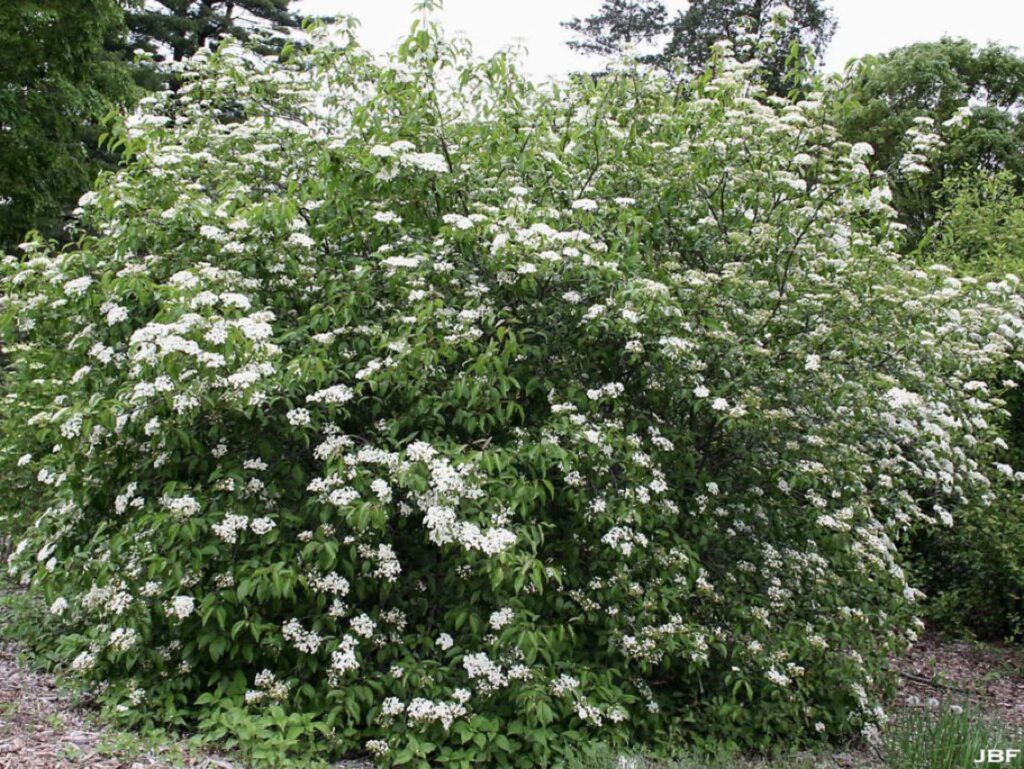
~Blackhaw viburnum Viburnum prunifolium
~Blackhaw viburnum Viburnum prunifolium
Large, deciduous, native shrub growing 8+ ft tall with fragrant white flowers. Grows best in moist, well-drained soil, but can tolerate alkaline conditions, clay soil, and dry sites. Grows best in full sun (6 hrs direct light daily) and partial sun/shade (4-6 hrs light daily). Seasons of interest are mid to late spring and early to mid fall.
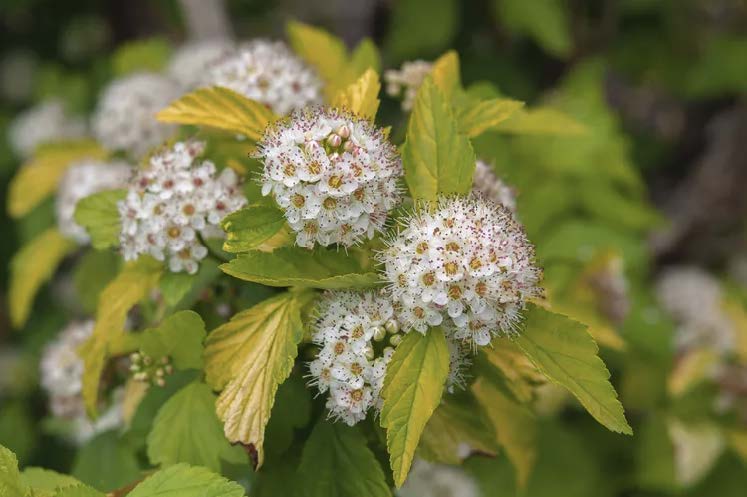
~Ninebark Physocarpus opulifolius
Deciduous, native shrub growing 3-10 ft tall, 3-8 ft wide and producing pink and white flowers in spring and summer for about 2 weeks. Grows in clay and loamy soil in full or partial sun. Attractive yellow, green, or reddish leaves. Its red fruit attracts birds in late summer and autumn.
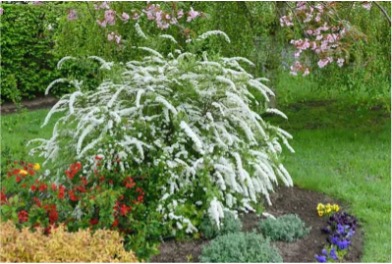
~Garland spirea Spirea grefsheim
A non-native Norwegian cultivar. This compact, deciduous shrub has graceful outward arching branches bearing white fragrant flowers in early spring. Small, narrow, sea-green leaves provide a dense foliage to the base of the plant. Grows 5-6 ft tall and wide. Loves full sun but tolerates light shade and grows in average, medium moisture, well-drained soils.Good for borders, foundation plantings, hedges, and on banks and slopes.
Trees, 8 – 10 ft, $45
~Hop hornbeam Ostrya virginiana
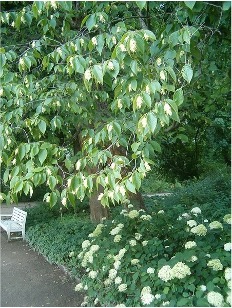
~Hop hornbeam Ostrya virginiana
Native, deciduous tree growing 20-50 ft tall and 15-30 ft wide with very hard wood and brownish scaly bark. It produces reddish-brown male catkins and small, light green female catkins. The fruits start out green and mature to a light brown or buff color and can persist on the tree from summer to winter providing food for birds and small mammals. The dark green foliage turns lemon yellow, yellowish brown, or red in the fall.
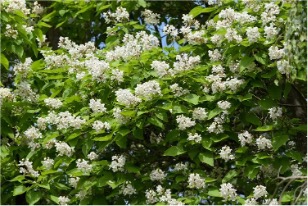
~Catalpa Catalpa spp
40-60 ft tall, 20-40 ft wide deciduous tree that grows in full sun and partial shade in clay, loam, sandy, moist, and dry soils. It is known for its large heart-shaped leaves (up to 12 in long and 8 in wide), twisted spreading branches, panicles of creamy white fragrant flowers, and long dark brown seed pods. Its flowers attract bees, butterflies, and hummingbirds, and the tree serves as the sole host for the catalpa sphinx moth. Its dense foliage provides a suitable cover for a wide variety of song birds and wildlife.
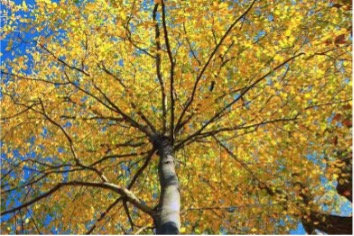
~Sweet birch Betula lenta
Aromatic, deciduous native tree that grows 40-50 ft tall and 35-50 ft wide in full sun or partial shade in moderately fertile, moist, well-drained soils, tolerating a wide range of soil conditions from dry to wet as well as being salt tolerant. The foliage turns from a light green in the spring to dark green as the season progresses before turning a rich golden yellow in the fall. The 2-6 inch leaves are ovate, serrated, and shiny. The flowers are small 3 inch long tan catkins, appearing in the spring and attracting bees and other insect pollinators. The bark starts out thin and reddish-brown, turning dark gray with vertical scaly plates as it ages. The tree attracts caterpillars and provides food for migrating birds.

~Black cherry Prunus serotina
Native deciduous tree growing 60 ft tall but able to reach 145 ft tall on exceptional sites. Its very attractive 5 inch long white flower heads situated at the ends of leafy twigs in the spring consist of numerous ⅓ inch white flowers, each with 5 petals. Its fruits are berry-like, about ¾ inch in diameter and ripening to a black purple color. The leaves are smooth, narrowly oval, and about 4 inches long with finely toothed margins.
